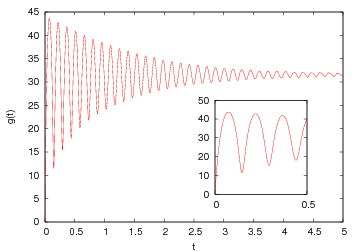Polymers in a VacuumA polymer chain such as a protein molecule in a vacuum might seem like an unlikely idea. How could it get vaporized in the first place without having its structure completely obliterated? But the 2002 Nobel prize in Chemistry was awarded, in part, for the discovery of how to do this. This was a key element in doing mass spectrometry on biological samples which has had an enormous impact on biology and medicine.
But getting the mass of the molecule may not be the only interesting thing
one can do with this technique. In this work, I found that there is a
lot of new phenomena related to the internal dynamics and structure of
polymers flying around in empty space. It turns out that they behave
very differently from polymers in solution.
This work has the potential for profound impact. Probing protein's internal dynamics, by radio waves, should give a lot more information than just the mass, allowing for a better identification of the actual molecule. Other potential applications include examining a DNA molecule suspended over a lithographed trench, and polymers in interstellar space. |
 Instead of being heavily
damped, in many situations they oscillate as they damp out. For example the
time auto correlation of position for an "ideal" chain is shown here. It looks qualitatively
different from anything seen in solution, with strong oscillations that only
slowly die away. The size of
them is substantially altered by the conservation laws that aren't obeyed
in solution.
Instead of being heavily
damped, in many situations they oscillate as they damp out. For example the
time auto correlation of position for an "ideal" chain is shown here. It looks qualitatively
different from anything seen in solution, with strong oscillations that only
slowly die away. The size of
them is substantially altered by the conservation laws that aren't obeyed
in solution.